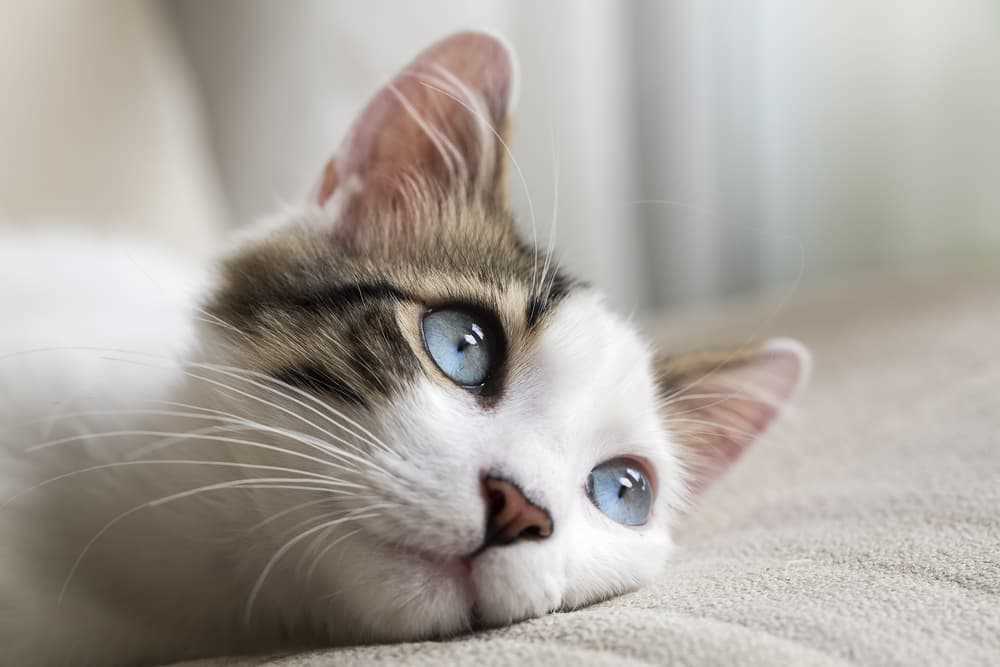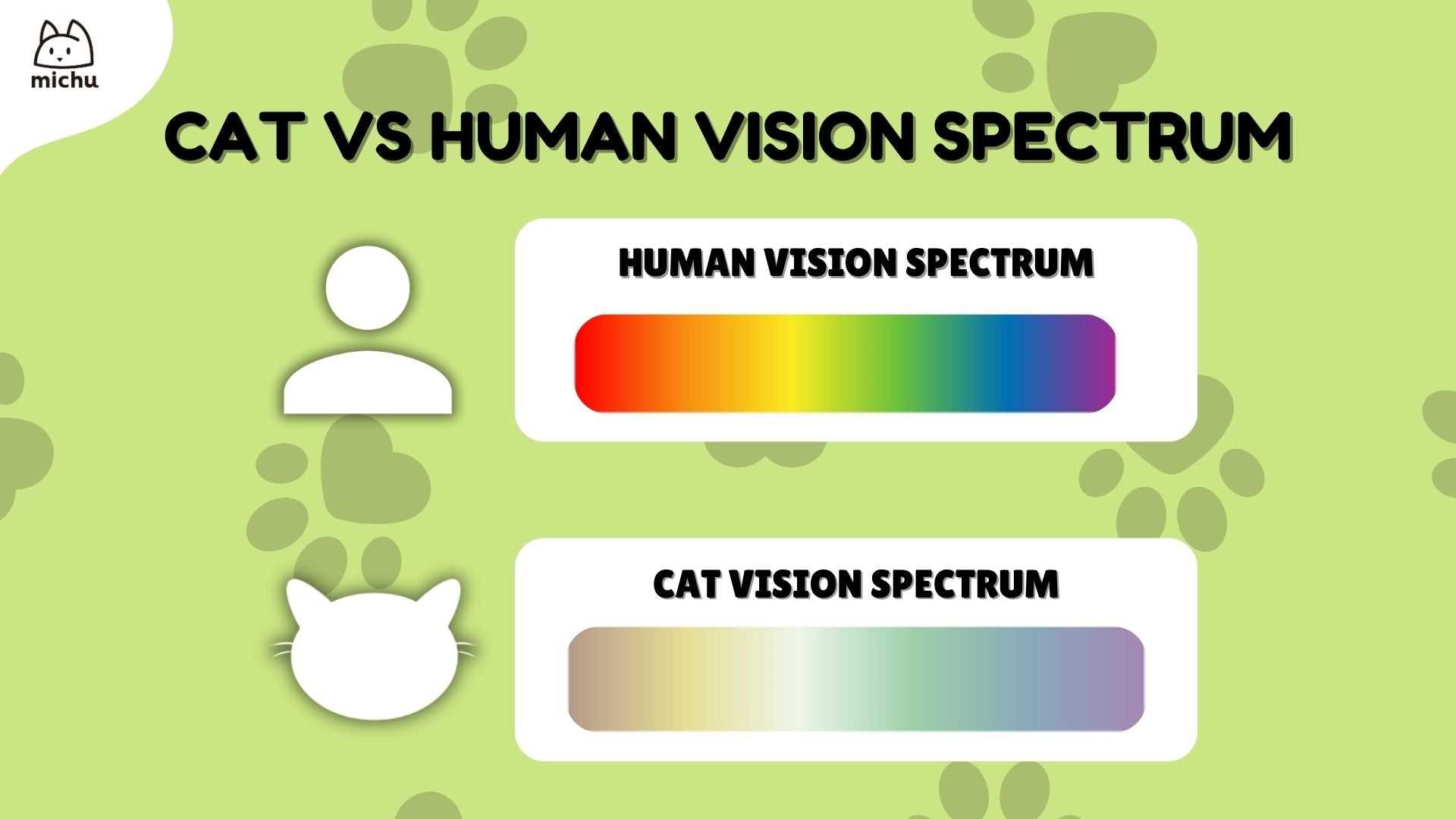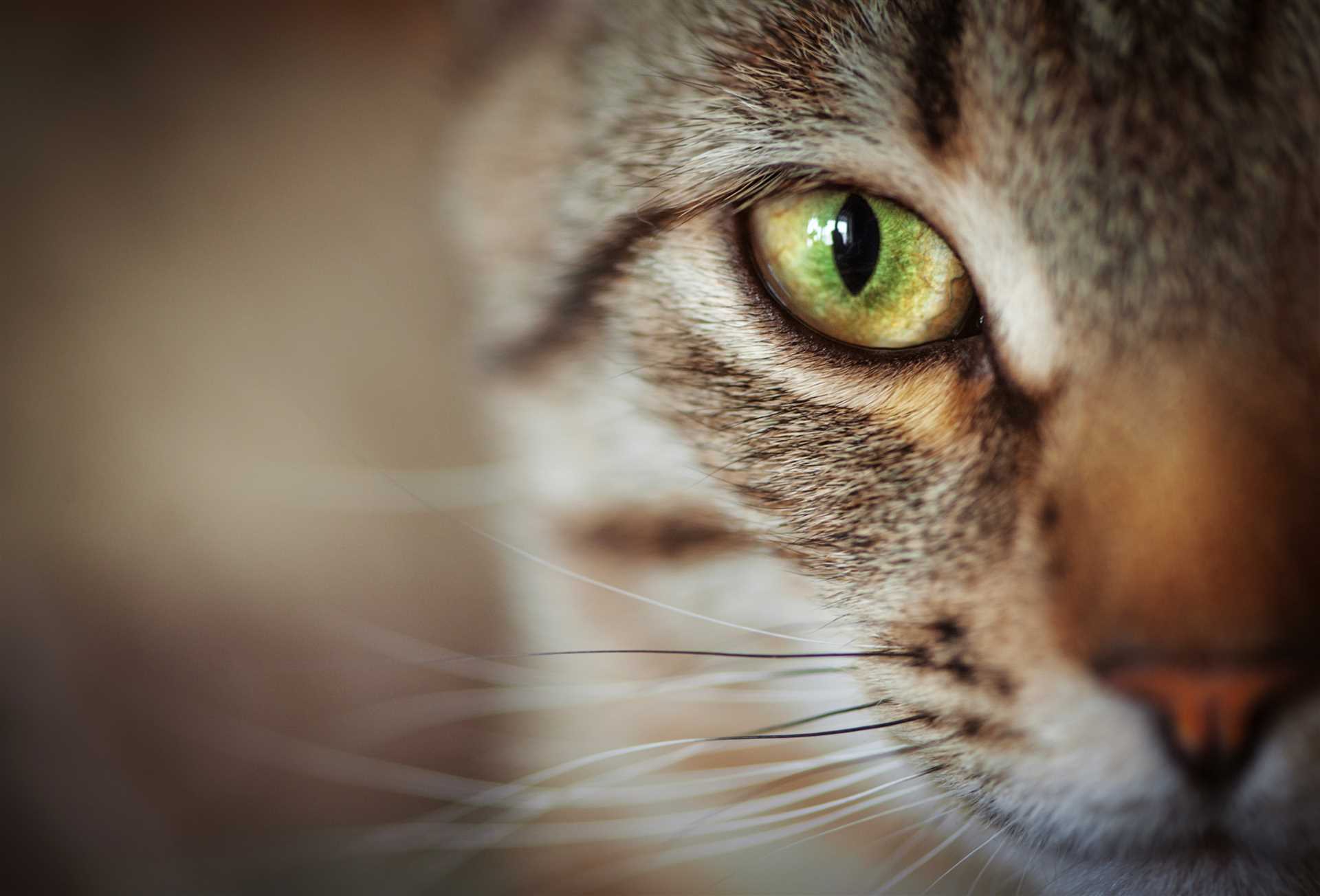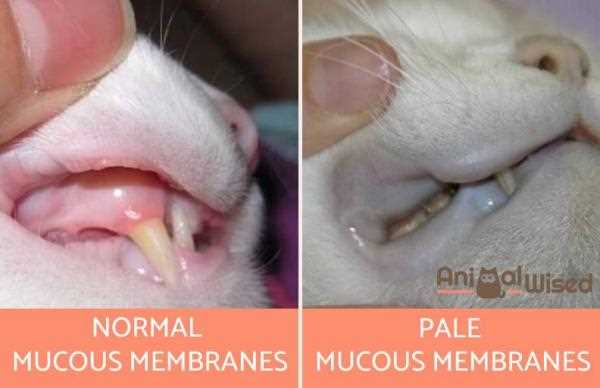As an 8-year-old Scottish Fold, I’ve spent my days observing the world around me, often pondering how I perceive it. Research indicates that my vision isn’t limited to mere shades of grey. While my spectrum differs from yours, I can detect some hues, particularly blues and yellows.
Studies show that my eyes contain fewer cone cells, the receptors responsible for color detection. This means my world is less vibrant than yours, but it’s not entirely devoid of hues. I’m particularly sensitive to blue, which means I can appreciate a nice sky or the ocean in my own way.
Interestingly, reds and greens appear more muted in my perception. So, while I may not enjoy a rainbow like you do, my view of the world is still a unique blend of tones. Understanding my vision can help you create a stimulating environment with toys and objects that cater to what I can truly appreciate!
Understanding My Visual Experience

It’s a common misconception that my world is devoid of hues. I perceive a range of shades, but my palette is narrower compared to humans. While I might not bask in the brilliance of reds and greens like you do, I can distinguish between blues, yellows, and some greys. My vision is adapted for low-light conditions, enhancing my ability to detect movement rather than focusing on vibrant details.
Color Perception in My Daily Life

When I chase after my toys or explore my surroundings, I rely more on contrast rather than vibrant colors. The various shades of my environment help me navigate, especially as dusk approaches. The textures and shapes of objects play a significant role in my interactions, allowing me to engage with the world around me efficiently.
What This Means for My Humans

Understanding my perception can enrich the way you interact with me. Opt for toys in shades of blue and yellow, as these are more likely to capture my interest. Keeping my environment visually stimulating with contrasting colors and textures can enhance our playtime and bonding moments. This approach allows you to create an engaging atmosphere tailored to my unique visual experience.
Understanding Cat Vision and Color Perception
As an 8-year-old Scottish Fold, I can tell you that the way I perceive my surroundings is quite fascinating. My vision is adapted for hunting; I excel in low-light conditions, which means I notice movement better than most humans. While my world may not burst with the spectrum that you enjoy, I can identify certain hues, predominantly in the blue and green ranges. These shades appear more vibrant to my eyes, while reds and pinks tend to blend into a grayish tone.
Light Sensitivity and Motion Detection
My eyes have a higher number of rod cells, which allows me to detect motion more efficiently. This adaptation is perfect for spotting potential prey. When you see me pouncing on a toy, know that it’s my superior motion detection at play! This sensitivity to light, combined with my ability to perceive some colors, helps me navigate my environment effectively.
Implications for Play and Environment
Understanding how I perceive my surroundings can enhance our interactions. Choosing toys that feature blue or green shades will likely capture my attention better. If you’re curious about my quirky habits, like why I sometimes munch on paper, you might find this link helpful: why does my cat eat toilet paper. Additionally, ensuring I have the right grooming tools, such as the best comb for long haired cats, can make my daily routine more enjoyable. By recognizing how I view the world, you can create an environment that stimulates and satisfies my instincts.
Comparing Cat Vision to Human Vision
Humans possess a broader spectrum of perception, allowing us to identify various shades. We have three types of cones in our retinas, which enable us to differentiate between red, green, and blue hues. In contrast, my eyesight relies on two types of cones, primarily sensitive to blue and green wavelengths. This limits my ability to distinguish between reds and greens, which may appear muted or greyish to me.
Key Differences in Visual Abilities
- Night Vision: My night vision is superior to that of humans. I can see well in low light due to a higher number of rod cells in my eyes, which are responsible for detecting light intensity.
- Motion Detection: I excel at spotting quick movements. My eyes are designed to track fast changes, making me a skilled hunter.
- Field of View: My peripheral vision is greater, allowing for a broader view of my surroundings. This helps me stay alert to potential threats.
Implications for Interaction
Understanding these differences helps my human companions engage with me more effectively. For example, using toys with contrasting shades can enhance my playtime experience. Additionally, knowing that I might not react to certain colors can guide them in choosing the right environment for me.
By appreciating our distinct visual perceptions, humans can foster a better bond with us, ensuring our surroundings are as stimulating as possible.
Practical Implications for Cat Owners
Choose toys that feature shades of blue and green. These hues are more detectable and engaging for us, leading to increased playtime and mental stimulation.
When selecting furniture or décor, consider muted tones of yellow or blue. Avoid overly bright or contrasting colors that might overwhelm our senses.
Create a comfortable environment with natural lighting. This enhances the perception of our surroundings, making it easier for us to navigate and enjoy our space.
Invest in scratching posts or climbing structures that incorporate varied textures. While visual appeal is important, tactile engagement is equally stimulating.
During training sessions, utilize treats or toys that contrast with the background. This helps maintain our focus and encourages participation in activities.
Limit the use of harsh or glaring artificial lights. Soft lighting can reduce stress and make the environment more inviting for exploration and relaxation.
Incorporate interactive games that rely on movement rather than visual cues alone. This caters to our natural instincts, promoting physical activity and mental engagement.
Activities to Enhance Color Recognition in Felines
Playing with different toys designed in various hues can stimulate visual perception. Opt for items in shades like blue, green, and yellow, which are more distinguishable for me. Interactive toys that move or make noise attract interest, enhancing engagement.
Colorful Puzzle Feeders
Utilizing puzzle feeders painted in multiple tones can create a fun challenge. These devices not only provide nourishment but also encourage mental stimulation as I figure out how to access treats hidden inside. Choose feeders featuring contrasting colors to capture attention.
Outdoor Exploration with Colorful Objects
Setting up a safe outdoor space with vibrant items encourages exploration. Scatter colorful balls or fabric swatches to pique curiosity. Natural elements like flowers can also add visual stimulation. Supervised outdoor time allows for the discovery of varied visual stimuli, enhancing perception skills.
Incorporating these activities regularly can significantly improve how I interpret my surroundings, making playtime even more enjoyable!
As an 8-year-old Scottish Fold, I’ve spent my days observing the world around me, often pondering how I perceive it. Research indicates that my vision isn’t limited to mere shades of grey. While my spectrum differs from yours, I can detect some hues, particularly blues and yellows.
Studies show that my eyes contain fewer cone cells, the receptors responsible for color detection. This means my world is less vibrant than yours, but it’s not entirely devoid of hues. I’m particularly sensitive to blue, which means I can appreciate a nice sky or the ocean in my own way.
Interestingly, reds and greens appear more muted in my perception. So, while I may not enjoy a rainbow like you do, my view of the world is still a unique blend of tones. Understanding my vision can help you create a stimulating environment with toys and objects that cater to what I can truly appreciate!
Understanding My Visual Experience

It’s a common misconception that my world is devoid of hues. I perceive a range of shades, but my palette is narrower compared to humans. While I might not bask in the brilliance of reds and greens like you do, I can distinguish between blues, yellows, and some greys. My vision is adapted for low-light conditions, enhancing my ability to detect movement rather than focusing on vibrant details.
Color Perception in My Daily Life

When I chase after my toys or explore my surroundings, I rely more on contrast rather than vibrant colors. The various shades of my environment help me navigate, especially as dusk approaches. The textures and shapes of objects play a significant role in my interactions, allowing me to engage with the world around me efficiently.
What This Means for My Humans

Understanding my perception can enrich the way you interact with me. Opt for toys in shades of blue and yellow, as these are more likely to capture my interest. Keeping my environment visually stimulating with contrasting colors and textures can enhance our playtime and bonding moments. This approach allows you to create an engaging atmosphere tailored to my unique visual experience.
Understanding Cat Vision and Color Perception
As an 8-year-old Scottish Fold, I can tell you that the way I perceive my surroundings is quite fascinating. My vision is adapted for hunting; I excel in low-light conditions, which means I notice movement better than most humans. While my world may not burst with the spectrum that you enjoy, I can identify certain hues, predominantly in the blue and green ranges. These shades appear more vibrant to my eyes, while reds and pinks tend to blend into a grayish tone.
Light Sensitivity and Motion Detection
My eyes have a higher number of rod cells, which allows me to detect motion more efficiently. This adaptation is perfect for spotting potential prey. When you see me pouncing on a toy, know that it’s my superior motion detection at play! This sensitivity to light, combined with my ability to perceive some colors, helps me navigate my environment effectively.
Implications for Play and Environment
Understanding how I perceive my surroundings can enhance our interactions. Choosing toys that feature blue or green shades will likely capture my attention better. If you’re curious about my quirky habits, like why I sometimes munch on paper, you might find this link helpful: why does my cat eat toilet paper. Additionally, ensuring I have the right grooming tools, such as the best comb for long haired cats, can make my daily routine more enjoyable. By recognizing how I view the world, you can create an environment that stimulates and satisfies my instincts.
Comparing Cat Vision to Human Vision
Humans possess a broader spectrum of perception, allowing us to identify various shades. We have three types of cones in our retinas, which enable us to differentiate between red, green, and blue hues. In contrast, my eyesight relies on two types of cones, primarily sensitive to blue and green wavelengths. This limits my ability to distinguish between reds and greens, which may appear muted or greyish to me.
Key Differences in Visual Abilities
- Night Vision: My night vision is superior to that of humans. I can see well in low light due to a higher number of rod cells in my eyes, which are responsible for detecting light intensity.
- Motion Detection: I excel at spotting quick movements. My eyes are designed to track fast changes, making me a skilled hunter.
- Field of View: My peripheral vision is greater, allowing for a broader view of my surroundings. This helps me stay alert to potential threats.
Implications for Interaction
Understanding these differences helps my human companions engage with me more effectively. For example, using toys with contrasting shades can enhance my playtime experience. Additionally, knowing that I might not react to certain colors can guide them in choosing the right environment for me.
By appreciating our distinct visual perceptions, humans can foster a better bond with us, ensuring our surroundings are as stimulating as possible.
Practical Implications for Cat Owners
Choose toys that feature shades of blue and green. These hues are more detectable and engaging for us, leading to increased playtime and mental stimulation.
When selecting furniture or décor, consider muted tones of yellow or blue. Avoid overly bright or contrasting colors that might overwhelm our senses.
Create a comfortable environment with natural lighting. This enhances the perception of our surroundings, making it easier for us to navigate and enjoy our space.
Invest in scratching posts or climbing structures that incorporate varied textures. While visual appeal is important, tactile engagement is equally stimulating.
During training sessions, utilize treats or toys that contrast with the background. This helps maintain our focus and encourages participation in activities.
Limit the use of harsh or glaring artificial lights. Soft lighting can reduce stress and make the environment more inviting for exploration and relaxation.
Incorporate interactive games that rely on movement rather than visual cues alone. This caters to our natural instincts, promoting physical activity and mental engagement.
Activities to Enhance Color Recognition in Felines
Playing with different toys designed in various hues can stimulate visual perception. Opt for items in shades like blue, green, and yellow, which are more distinguishable for me. Interactive toys that move or make noise attract interest, enhancing engagement.
Colorful Puzzle Feeders
Utilizing puzzle feeders painted in multiple tones can create a fun challenge. These devices not only provide nourishment but also encourage mental stimulation as I figure out how to access treats hidden inside. Choose feeders featuring contrasting colors to capture attention.
Outdoor Exploration with Colorful Objects
Setting up a safe outdoor space with vibrant items encourages exploration. Scatter colorful balls or fabric swatches to pique curiosity. Natural elements like flowers can also add visual stimulation. Supervised outdoor time allows for the discovery of varied visual stimuli, enhancing perception skills.
Incorporating these activities regularly can significantly improve how I interpret my surroundings, making playtime even more enjoyable!
As an 8-year-old Scottish Fold, I’ve spent my days observing the world around me, often pondering how I perceive it. Research indicates that my vision isn’t limited to mere shades of grey. While my spectrum differs from yours, I can detect some hues, particularly blues and yellows.
Studies show that my eyes contain fewer cone cells, the receptors responsible for color detection. This means my world is less vibrant than yours, but it’s not entirely devoid of hues. I’m particularly sensitive to blue, which means I can appreciate a nice sky or the ocean in my own way.
Interestingly, reds and greens appear more muted in my perception. So, while I may not enjoy a rainbow like you do, my view of the world is still a unique blend of tones. Understanding my vision can help you create a stimulating environment with toys and objects that cater to what I can truly appreciate!
Understanding My Visual Experience

It’s a common misconception that my world is devoid of hues. I perceive a range of shades, but my palette is narrower compared to humans. While I might not bask in the brilliance of reds and greens like you do, I can distinguish between blues, yellows, and some greys. My vision is adapted for low-light conditions, enhancing my ability to detect movement rather than focusing on vibrant details.
Color Perception in My Daily Life

When I chase after my toys or explore my surroundings, I rely more on contrast rather than vibrant colors. The various shades of my environment help me navigate, especially as dusk approaches. The textures and shapes of objects play a significant role in my interactions, allowing me to engage with the world around me efficiently.
What This Means for My Humans

Understanding my perception can enrich the way you interact with me. Opt for toys in shades of blue and yellow, as these are more likely to capture my interest. Keeping my environment visually stimulating with contrasting colors and textures can enhance our playtime and bonding moments. This approach allows you to create an engaging atmosphere tailored to my unique visual experience.
Understanding Cat Vision and Color Perception
As an 8-year-old Scottish Fold, I can tell you that the way I perceive my surroundings is quite fascinating. My vision is adapted for hunting; I excel in low-light conditions, which means I notice movement better than most humans. While my world may not burst with the spectrum that you enjoy, I can identify certain hues, predominantly in the blue and green ranges. These shades appear more vibrant to my eyes, while reds and pinks tend to blend into a grayish tone.
Light Sensitivity and Motion Detection
My eyes have a higher number of rod cells, which allows me to detect motion more efficiently. This adaptation is perfect for spotting potential prey. When you see me pouncing on a toy, know that it’s my superior motion detection at play! This sensitivity to light, combined with my ability to perceive some colors, helps me navigate my environment effectively.
Implications for Play and Environment
Understanding how I perceive my surroundings can enhance our interactions. Choosing toys that feature blue or green shades will likely capture my attention better. If you’re curious about my quirky habits, like why I sometimes munch on paper, you might find this link helpful: why does my cat eat toilet paper. Additionally, ensuring I have the right grooming tools, such as the best comb for long haired cats, can make my daily routine more enjoyable. By recognizing how I view the world, you can create an environment that stimulates and satisfies my instincts.
Comparing Cat Vision to Human Vision
Humans possess a broader spectrum of perception, allowing us to identify various shades. We have three types of cones in our retinas, which enable us to differentiate between red, green, and blue hues. In contrast, my eyesight relies on two types of cones, primarily sensitive to blue and green wavelengths. This limits my ability to distinguish between reds and greens, which may appear muted or greyish to me.
Key Differences in Visual Abilities
- Night Vision: My night vision is superior to that of humans. I can see well in low light due to a higher number of rod cells in my eyes, which are responsible for detecting light intensity.
- Motion Detection: I excel at spotting quick movements. My eyes are designed to track fast changes, making me a skilled hunter.
- Field of View: My peripheral vision is greater, allowing for a broader view of my surroundings. This helps me stay alert to potential threats.
Implications for Interaction
Understanding these differences helps my human companions engage with me more effectively. For example, using toys with contrasting shades can enhance my playtime experience. Additionally, knowing that I might not react to certain colors can guide them in choosing the right environment for me.
By appreciating our distinct visual perceptions, humans can foster a better bond with us, ensuring our surroundings are as stimulating as possible.
Practical Implications for Cat Owners
Choose toys that feature shades of blue and green. These hues are more detectable and engaging for us, leading to increased playtime and mental stimulation.
When selecting furniture or décor, consider muted tones of yellow or blue. Avoid overly bright or contrasting colors that might overwhelm our senses.
Create a comfortable environment with natural lighting. This enhances the perception of our surroundings, making it easier for us to navigate and enjoy our space.
Invest in scratching posts or climbing structures that incorporate varied textures. While visual appeal is important, tactile engagement is equally stimulating.
During training sessions, utilize treats or toys that contrast with the background. This helps maintain our focus and encourages participation in activities.
Limit the use of harsh or glaring artificial lights. Soft lighting can reduce stress and make the environment more inviting for exploration and relaxation.
Incorporate interactive games that rely on movement rather than visual cues alone. This caters to our natural instincts, promoting physical activity and mental engagement.
Activities to Enhance Color Recognition in Felines
Playing with different toys designed in various hues can stimulate visual perception. Opt for items in shades like blue, green, and yellow, which are more distinguishable for me. Interactive toys that move or make noise attract interest, enhancing engagement.
Colorful Puzzle Feeders
Utilizing puzzle feeders painted in multiple tones can create a fun challenge. These devices not only provide nourishment but also encourage mental stimulation as I figure out how to access treats hidden inside. Choose feeders featuring contrasting colors to capture attention.
Outdoor Exploration with Colorful Objects
Setting up a safe outdoor space with vibrant items encourages exploration. Scatter colorful balls or fabric swatches to pique curiosity. Natural elements like flowers can also add visual stimulation. Supervised outdoor time allows for the discovery of varied visual stimuli, enhancing perception skills.
Incorporating these activities regularly can significantly improve how I interpret my surroundings, making playtime even more enjoyable!







